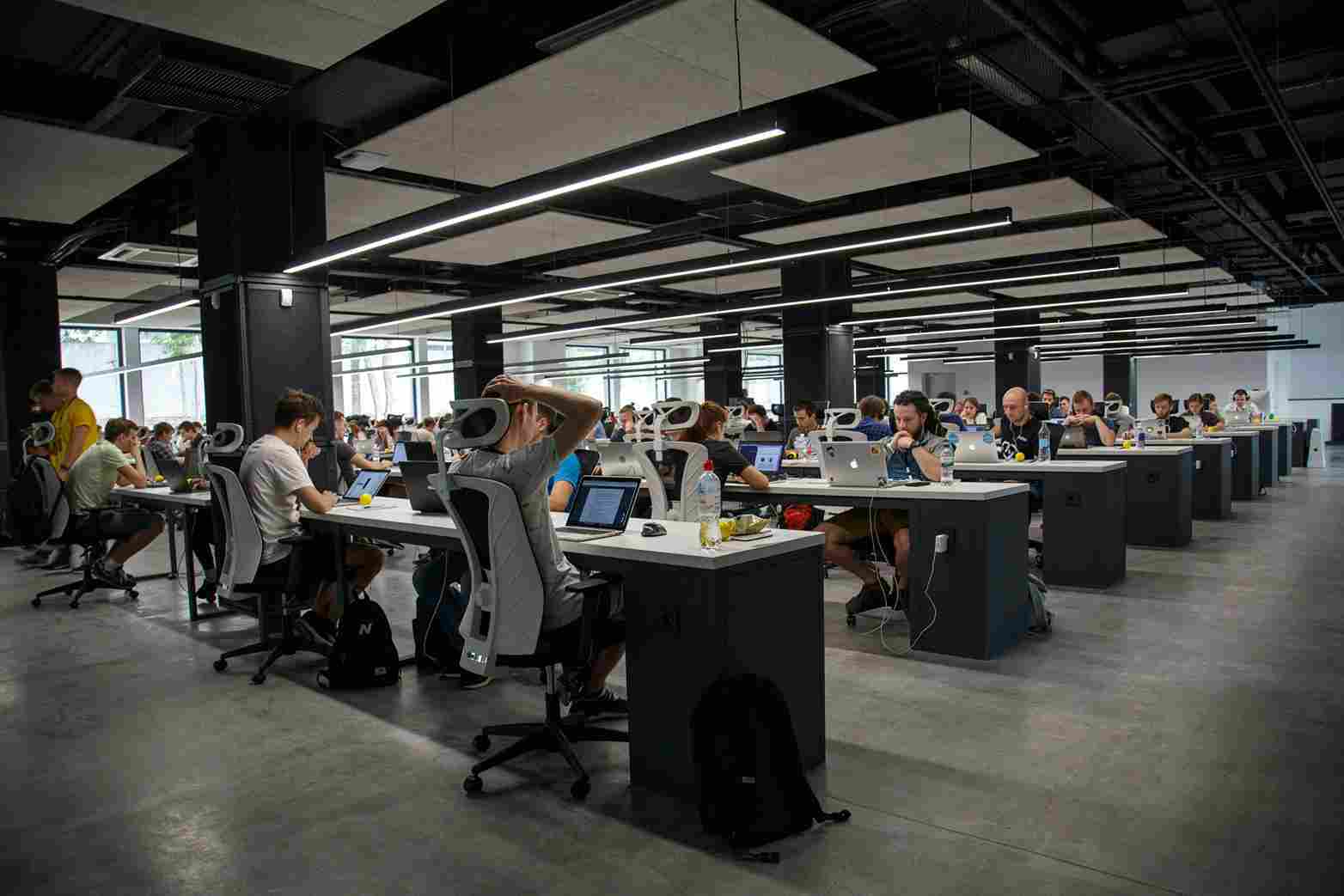
Integrated Workplace Management Systems (IWMS): A Complete Guide
Explore how IWMS transforms operations by centralizing facilities, assets, and space management to drive efficiency, cost savings, and smarter ...
Solutions
Workplace Management Solutions
Real Estate Management Solutions
Maintenance Management Solutions
Energy Management Solutions
Engineering Document Management Solutions
Asset Management Solutions
Automate campus scheduling for classes, meetings, and exams with our EMS software.
Plan and manage conferences effortlessly with EMS software to impress guests and streamline operations.
Boost workplace flexibility and maximize space use with seamless desk and room booking.
Organize workplace or campus events smoothly, creating memorable experiences.
Optimize workspace, manage allocations efficiently, and reduce costs with our space management solutions.
Deliver projects on time and within budget by improving communication, collaboration, and efficiency with our software.
Streamline lease accounting for ASC 842, IFRS, and GASB compliance.
Manage leases efficiently by tracking key dates, analyzing costs, and ensuring compliance.
Centralize data and analytics for better insights, faster negotiations, and revenue growth.
Centralize facility and asset maintenance, automate work orders, and ensure compliance with our CMMS software.
Extend asset life, reduce downtime, and prevent costly repairs with data-driven monitoring.
Prevent equipment failures and extend asset life by detecting and addressing issues early.
Make sustainable, cost-efficient energy decisions by monitoring and optimizing power consumption.
Remotely monitor and control equipment with real-time data to predict issues, boost efficiency, and reduce downtime.
Easily share and collaborate on documents, creating a single source of truth for engineers and contractors.
Manage and analyze assets across their lifecycle to schedule maintenance, reduce downtime, and extend lifespan.
Improve visibility, automate work orders, and ensure compliance for efficient facility and asset management.
Resources
Browse our full library of resources all in one place, including webinars, whitepapers, podcast episodes, and more.
Support
Looking for access to technical support, best practices, helpful videos, or training tools? You’ve come to the right place.
About Accruent
Get the latest information on Accruent, our solutions, events, and the company at large.

Space optimization transforms underutilized workspaces into efficient, cost-saving environments using data-driven strategies and tools. This article explores actionable tips, innovative software solutions, and the benefits of maximizing productivity across industries like offices, conference centers, and educational institutions.
Table of contents
As organizations bring employees back to the office full-time, they face the challenge of optimizing space to ensure there is room for everyone while avoiding inefficiencies.
Nowadays, organizations can’t afford inefficiency. Space optimization cuts costs and drives productivity, particularly in workplaces, conference centers, and educational institutions. It goes beyond simply rearranging desks, transforming every square foot into a fully utilized resource.
This article reveals practical strategies, leading software solutions, and the transformative benefits of optimizing your workspace for peak efficiency and impact.
Ready to transform a space? Let’s dive in.
Space optimization strategically uses available areas to maximize efficiency and functionality. Organizations can assess workspace and facility utilization to identify underused spaces and transform them into productive areas. Whether it’s an office, conference center, or educational institution, optimizing space ensures that every square foot serves a purpose. Space management goes beyond rearranging furniture; it’s about optimizing the space. It uses data, analytics, and modern tools to make more imaginative layouts and resource allocation decisions. Workspace optimization is about saving space as much as unlocking potential.
Employees can navigate environments more efficiently, improving collaboration and output. Optimized spaces also translate to significant cost savings by eliminating wasted square footage and reducing the need for expensive expansions. This financial control is a powerful tool for organizations looking to manage their budget effectively.
Space optimization is a powerful tool for organizations looking to lower their environmental footprint. By maximizing existing space, companies can avoid unnecessary construction and reduce energy consumption, contributing to a more sustainable future. This proactive approach to environmental responsibility is a key benefit of office space optimization.
Download our free Space Optimization Checklist to streamling planning, improve utilization, and make every square foot count.
Space optimization delivers universal benefits, regardless of the type of workspace. From conference centers to manufacturing facilities, optimizing space improves scheduling, resource allocation, and the overall use of physical areas. Companies can organize space strategically, boosting efficiency, cutting costs, and improving user experiences. Whether it's increasing collaboration in corporate offices or streamlining operations in academic institutions, the advantages are clear: optimized space leads to better outcomes across the board.
Well-organized spaces allow for better event scheduling and resource allocation. As a result, visitors enjoy a smoother experience, improving the overall guest experience.
Optimized offices increase productivity and collaboration among employees. Meeting rooms and workstations are better utilized, reducing downtime and maximizing output.
Efficient scheduling of classrooms, labs, and shared spaces supports academic and extracurricular activities. Streamlined operations ensure campuses of all types and sizes run smoothly, and shared spaces like gyms and cafeterias are used to their full potential.
Optimized layouts create a more efficient and organized work environment by improving workflow, reducing clutter, and ensuring that tools and materials are easily accessible. A well-structured space enhances productivity by minimizing wasted movement and maximizing efficiency. By making the most of available floor space, organizations can enhance safety, lower operational costs, and create a more functional and productive workplace.
Optimizing space requires a combination of strategy, technology, and intelligent design. To utilize every inch of a workspace, one must assess the current space usage, create flexible areas, implement intelligent scheduling, and prioritize organization. These best practices increase efficiency and enhance the overall experience for employees, guests, and visitors. By following these strategies, organizations can make better decisions about designing and managing spaces.

Start optimizing space by analyzing how people currently use it. Conduct a space audit to identify underutilized areas using occupancy sensors and analytics software to collect data on different spaces' utilization. This data-driven approach helps pinpoint where companies can make changes to improve efficiency.
Creating flexible spaces allows work environments to adapt to changing needs. Convertible meeting rooms and modular furniture make it easy to repurpose areas as required. Incorporating activity-based working (ABW) concepts allows different spaces to serve multiple purposes, ensuring no area goes to waste.
Room booking and scheduling software is essential for preventing double-booking and maximizing the use of available spaces. Integrate digital signage to provide real-time updates on space availability, keeping everyone in the loop and preventing bottlenecks.
Introduce simple methods to declutter offices, such as document digitization and practical storage solutions. A well-organized environment not only looks better but also improves employee focus and well-being, creating a more pleasant place to work.
Office space optimization software offers a range of tools that help facility managers, office administrators, and other professionals manage their workspaces more efficiently.
These tools streamline room booking, monitor space utilization, and assist in workspace design, making it easier to optimize every square foot. Whether the goal is to track occupancy or plan layouts, space optimization software maximizes available resources.
For organizations looking for a more comprehensive approach, Integrated Workplace Management System (IWMS) provides a centralized platform to manage real estate, facilities, and space utilization. IWMS solutions go beyond traditional space optimization by integrating maintenance management, asset tracking, and sustainability initiatives, ensuring long-term efficiency and cost savings.
Choosing the right software is key to creating a more innovative, adaptable workspace that supports both operational goals and employee needs.
Room booking software enables optimal use of meeting rooms, desks, and shared spaces. These tools prevent conflicts and improve overall efficiency by providing real-time availability tracking and automated scheduling.
This software collects valuable space usage data. Using tools like occupancy sensors and desk usage monitors, and Wi-Fi connection tracking, it analyzes foot traffic and space utilization patterns to inform decisions about space reallocation.
Workplace design tools help create efficient office layouts tailored to an organization’s needs. With features like 2D and 3D modeling, managers can plan flexible work environments that evolve with space requirements.
Asset and facility management software optimizes space by efficiently managing physical assets and resources. These tools can track inventory and schedule maintenance, ensuring the effectiveness of facilities and equipment.
Accruent Space Intelligence (ASI) is an advanced solution that takes space optimization to the next level. Designed for facility managers, office administrators, and professionals across industries.
ASI offers a comprehensive suite of solutions, including EMS, FAMIS, and Lucernex which work together to support space planning, facility management, and real estate optimization. By integrating space utilization data, real-time occupancy tracking, and asset management, ASI empowers organizations to make smarter decisions about how to use their spaces.

Accruent Space Intelligence is a leading product in space optimization, making it an essential tool for businesses looking to maximize productivity and efficiency.
Here are common questions about space optimization.
Begin by conducting a space audit to identify underutilized areas. Tools like occupancy sensors and analytics software gather data on workspace usage. Focus on decluttering, reconfiguring layouts, and implementing flexible, multi-functional spaces.
Look for real-time tracking, space utilization analytics, and scheduling tools that prevent double booking. The best software also includes asset management features and reporting capabilities to help make data-driven space usage and resource allocation decisions.
In retail, space optimization involves organizing store layouts and inventory for maximum customer flow and sales. By analyzing foot traffic and product placement, retailers can enhance the shopping experience and increase sales by ensuring that every square foot serves a strategic purpose.
Explore how IWMS transforms operations by centralizing facilities, assets, and space management to drive efficiency, cost savings, and smarter ...
Discover expert tips on office space planning to create a highly efficient workspace. Learn how to maximize productivity with advanced space planning ...
A complete guide to IWMS: Learn how Integrated Workplace Management Software streamlines real estate and facilities management for enhanced ...
Subscribe to stay up to date with our latest news, resources and best practices